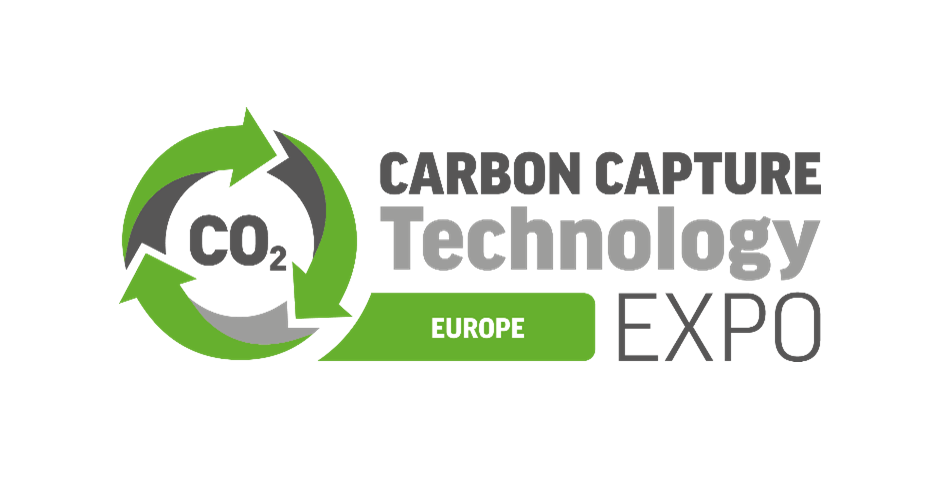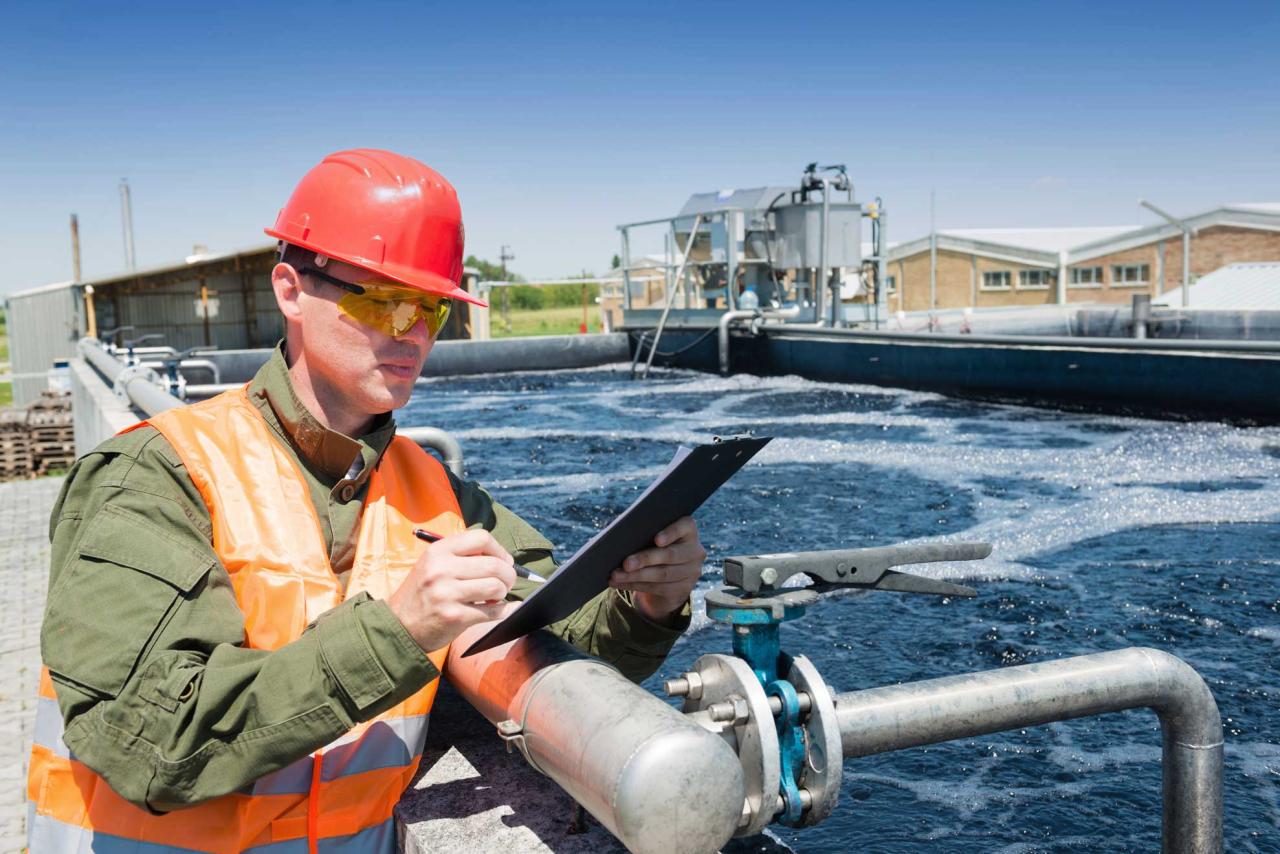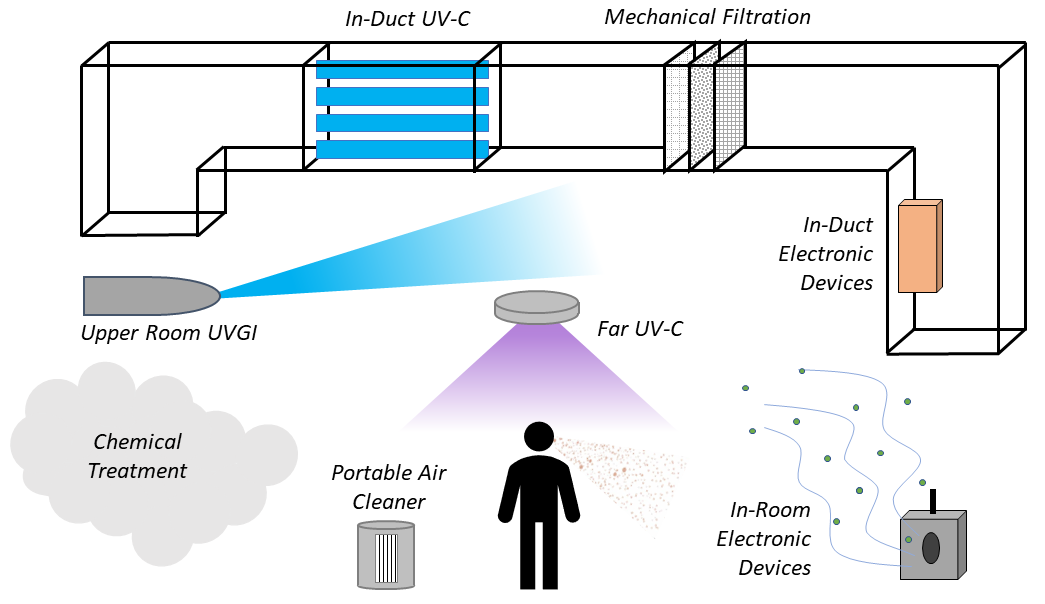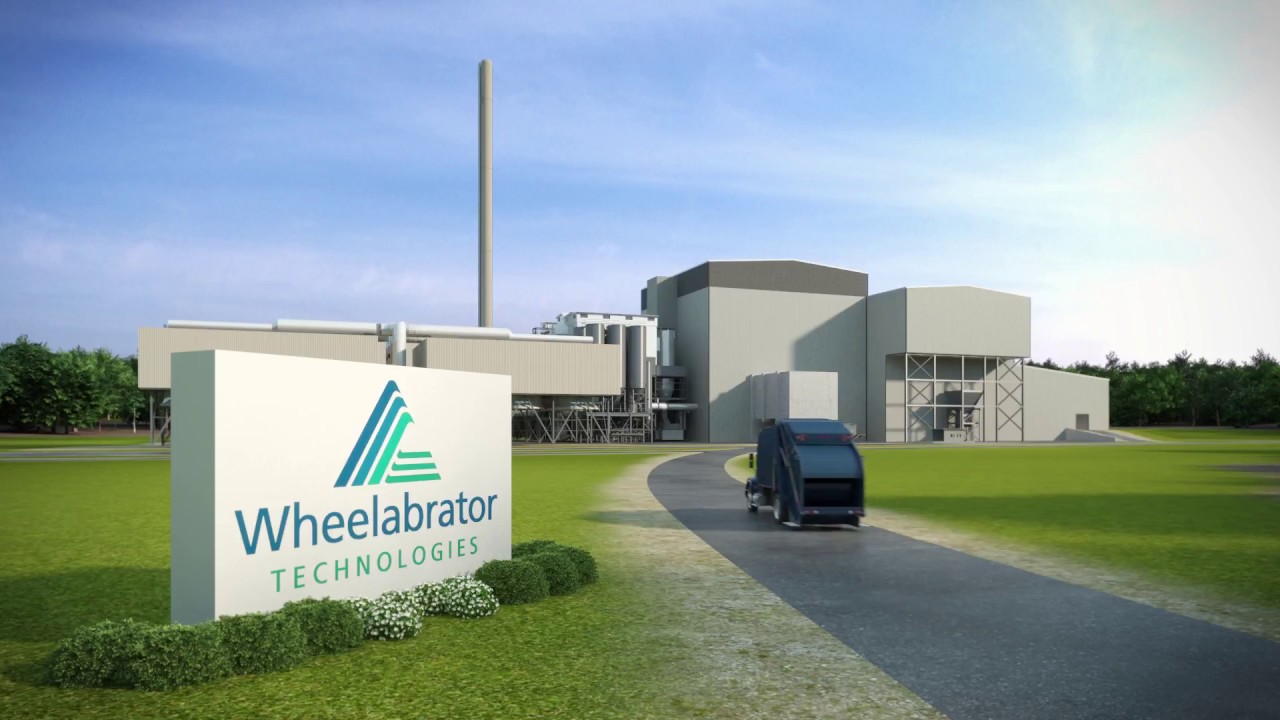Carbon Capture Technology Expo: A Platform for Innovation
The Carbon Capture Technology Expo is a vital platform for showcasing the latest advancements and innovations in carbon capture technology, a crucial tool in the fight against climate change. This […]

The Carbon Capture Technology Expo is a vital platform for showcasing the latest advancements and innovations in carbon capture technology, a crucial tool in the fight against climate change. This expo serves as a gathering point for researchers, industry professionals, policymakers, and investors, all united in their pursuit of sustainable solutions to mitigate the effects of greenhouse gas emissions.
Carbon capture technology has gained significant attention in recent years as a potential solution to reduce carbon dioxide emissions from various sources, including power plants, industrial processes, and even directly from the atmosphere. This technology works by capturing carbon dioxide before it is released into the atmosphere and storing it safely underground or repurposing it for other uses. The Carbon Capture Technology Expo provides a platform for exploring the diverse types of carbon capture technologies, their applications, and the challenges and opportunities they present.
Introduction

Carbon capture technology plays a crucial role in mitigating climate change by removing carbon dioxide from the atmosphere and industrial emissions. This technology holds immense potential for reducing greenhouse gas emissions and achieving global climate goals.
Carbon capture technology expos are essential platforms for bringing together industry leaders, researchers, and policymakers to showcase advancements, foster collaboration, and drive innovation in this critical field. These events facilitate knowledge sharing, investment opportunities, and the development of new solutions for a sustainable future.
History of Carbon Capture Technology
The concept of carbon capture dates back to the 19th century, with early attempts focusing on capturing carbon dioxide from industrial processes. However, significant progress in the development and deployment of carbon capture technologies occurred in the latter half of the 20th century, driven by concerns about climate change.
- Early Research and Development: Initial research on carbon capture technologies focused on capturing carbon dioxide from power plants and other industrial sources. These early efforts laid the groundwork for future advancements.
- Technological Advancements: The 1980s and 1990s saw significant advancements in carbon capture technologies, including the development of amine-based capture processes and the deployment of pilot-scale projects.
- Growing Recognition: The growing awareness of climate change in the late 20th century led to increased interest in carbon capture technologies as a potential solution for reducing greenhouse gas emissions.
Types of Carbon Capture Technologies

Carbon capture technologies play a crucial role in mitigating climate change by reducing carbon dioxide emissions from various sources. These technologies can be broadly categorized into three main types: pre-combustion capture, post-combustion capture, and direct air capture. Each technology utilizes different methods to capture and store carbon dioxide, offering distinct advantages and disadvantages.
Pre-Combustion Capture
Pre-combustion capture technologies capture carbon dioxide before it is released during the combustion process. This approach involves altering the fuel source to produce a stream of pure hydrogen and carbon dioxide. The carbon dioxide is then captured and stored, while the hydrogen is used as a clean fuel.
Advantages
- High capture efficiency: Pre-combustion capture technologies can achieve high capture rates, often exceeding 90%, due to the separation of carbon dioxide before combustion.
- Lower energy consumption: Pre-combustion capture requires less energy compared to post-combustion capture, as it operates at higher temperatures and pressures, leading to more efficient separation.
- Suitable for large-scale applications: This technology is well-suited for large-scale industrial processes, such as power plants and refineries, where significant amounts of carbon dioxide are produced.
Disadvantages
- High capital costs: The upfront investment for pre-combustion capture technologies is substantial due to the complex infrastructure required for fuel conversion and carbon dioxide separation.
- Limited deployment: The technology is currently limited in its deployment due to the high costs and the need for significant modifications to existing infrastructure.
- Technological challenges: Developing efficient and cost-effective pre-combustion capture technologies remains a challenge, particularly in terms of materials and process optimization.
Current State of Development and Deployment
Pre-combustion capture technologies are still under development, with several pilot and demonstration projects underway. For example, the Boundary Dam Power Station in Saskatchewan, Canada, is a commercial-scale pre-combustion capture facility that captures and stores carbon dioxide from coal-fired power generation. However, widespread deployment of pre-combustion capture technologies is limited due to the high costs and technological challenges.
Post-Combustion Capture, Carbon capture technology expo
Post-combustion capture technologies capture carbon dioxide after the combustion process. These technologies involve separating carbon dioxide from flue gases emitted from power plants, industrial processes, and other sources.
Advantages
- Retrofitting capability: Post-combustion capture technologies can be retrofitted to existing infrastructure, making them a viable option for reducing emissions from existing power plants and industrial facilities.
- Wide range of applications: These technologies are applicable to a wide range of industries, including power generation, cement production, and steel manufacturing.
- Mature technology: Post-combustion capture technologies are relatively mature, with several commercial-scale projects operational worldwide.
Disadvantages
Current State of Development and Deployment
Post-combustion capture technologies have witnessed significant progress in recent years, with several large-scale projects operational worldwide. For instance, the Petra Nova project in Texas, USA, captures carbon dioxide from a coal-fired power plant and stores it underground. However, the widespread deployment of post-combustion capture technologies is still hindered by the high costs and energy consumption associated with the process.
Direct Air Capture
Direct air capture (DAC) technologies capture carbon dioxide directly from the atmosphere. These technologies utilize specialized materials or processes to remove carbon dioxide from ambient air, offering a potential solution for removing carbon dioxide from the atmosphere and mitigating climate change.
Advantages
Disadvantages
Current State of Development and Deployment
DAC technologies are still in their early stages of development and deployment, with several pilot and demonstration projects underway. Companies like Climeworks and Global Thermostat are developing and deploying DAC technologies, focusing on capturing carbon dioxide from the atmosphere and utilizing it for various applications. However, the widespread deployment of DAC technologies is limited by the high costs and technological challenges associated with the process.
Applications of Carbon Capture Technology
Carbon capture technology has emerged as a crucial tool in the global fight against climate change. It offers a wide range of applications across various industries, playing a vital role in mitigating greenhouse gas emissions and achieving sustainability goals. This section explores the diverse applications of carbon capture technology, highlighting its potential to transform various sectors.
Power Generation
Carbon capture technology is widely used in power generation, particularly in coal-fired power plants, to reduce CO2 emissions. The technology captures CO2 from the flue gas before it is released into the atmosphere.
- The captured CO2 can be stored underground in geological formations, a process known as carbon capture and storage (CCS), or it can be used for enhanced oil recovery (EOR), where it is injected into oil reservoirs to increase oil production.
- Several large-scale CCS projects are underway globally, including the Boundary Dam Power Station in Canada, the Petra Nova project in Texas, and the Sleipner project in Norway. These projects demonstrate the feasibility and effectiveness of CCS in reducing emissions from power generation.
Industrial Processes
Carbon capture technology finds numerous applications in industrial processes, particularly in industries with high CO2 emissions, such as cement, steel, and chemicals.
- In cement production, for example, carbon capture can be integrated into the calcination process, capturing CO2 released during the decomposition of limestone. The captured CO2 can be stored or used in other industrial processes.
- In steel production, carbon capture can be used to capture CO2 from the blast furnace gas, which is a significant source of emissions. This captured CO2 can be used for EOR or stored underground.
- The chemical industry also benefits from carbon capture, as it can be used to capture CO2 from various processes, such as ammonia production and methanol synthesis. This captured CO2 can be used as a feedstock for other chemicals or stored underground.
Transportation
Carbon capture technology can be used to reduce emissions from transportation, particularly in the aviation sector.
- The technology can be used to capture CO2 from aircraft engines, either directly or from the exhaust gases. This captured CO2 can be stored or used for other purposes.
- While still in its early stages of development, carbon capture technology has the potential to significantly reduce the environmental impact of air travel.
Agriculture
Carbon capture technology can also play a role in reducing emissions from agriculture, a significant source of greenhouse gases.
- The technology can be used to capture CO2 from livestock manure, which is a major source of methane emissions. This captured CO2 can be used for EOR or stored underground.
- Carbon capture can also be used to enhance soil carbon sequestration, a natural process that stores carbon in the soil. This can be achieved by improving soil health and promoting the growth of plants that sequester carbon.
Key Players and Innovations in Carbon Capture
The field of carbon capture is rapidly evolving, driven by the efforts of leading companies, research institutions, and government initiatives. These entities are working tirelessly to develop and deploy innovative technologies that can effectively capture and store carbon dioxide emissions.
Leading Companies and Research Institutions
This section profiles key players in the carbon capture technology space. These companies and institutions are at the forefront of innovation, developing new technologies and solutions for capturing and storing carbon dioxide emissions.
- Global Thermostat: This company focuses on developing and deploying a unique technology that utilizes a proprietary sorbent material to capture carbon dioxide directly from the air. Their technology is designed to be highly efficient and cost-effective, making it a promising solution for large-scale carbon capture applications.
- Climeworks: Climeworks is a leading provider of direct air capture (DAC) technology. They operate large-scale DAC plants that capture carbon dioxide directly from the atmosphere, storing it underground or utilizing it for other purposes. Climeworks’ technology is particularly well-suited for capturing emissions from industrial processes or removing carbon dioxide from the atmosphere to mitigate climate change.
- Carbon Engineering: This company has developed a novel technology for capturing carbon dioxide directly from the air. Their process involves using a chemical solution to capture carbon dioxide from the atmosphere, followed by a series of steps to extract and store the captured carbon. Carbon Engineering’s technology is scalable and has the potential to make a significant impact on reducing atmospheric carbon dioxide concentrations.
- ExxonMobil: This energy giant is actively involved in developing carbon capture technologies. They are investing in research and development efforts to improve the efficiency and cost-effectiveness of carbon capture technologies, particularly for use in power plants and industrial facilities. ExxonMobil’s commitment to carbon capture is a significant step towards reducing emissions from the energy sector.
- Shell: Shell is another major energy company that is actively pursuing carbon capture technology. They are developing and deploying carbon capture technologies at their own facilities and are also investing in research and development to improve the technology’s efficiency and cost-effectiveness. Shell’s focus on carbon capture is a key part of their strategy to reduce emissions and transition to a lower-carbon energy system.
- National Energy Technology Laboratory (NETL): This U.S. Department of Energy laboratory is a leading research center for carbon capture technologies. NETL conducts research and development on a wide range of carbon capture technologies, including pre-combustion capture, post-combustion capture, and oxy-fuel combustion. Their work is critical to advancing the development and deployment of carbon capture technologies.
- Lawrence Livermore National Laboratory (LLNL): This U.S. Department of Energy laboratory is another key research center for carbon capture technologies. LLNL is working on developing advanced materials and processes for capturing and storing carbon dioxide. Their research is focused on improving the efficiency and cost-effectiveness of carbon capture technologies, making them more viable for large-scale deployment.
Recent Breakthroughs and Innovations
The field of carbon capture is witnessing continuous innovation, with recent breakthroughs and advancements that are significantly improving the technology’s efficiency, cost-effectiveness, and scalability.
- Improved Sorbents: Recent advancements in materials science have led to the development of highly efficient sorbents for capturing carbon dioxide. These new materials have higher capture capacities and can operate at lower temperatures, leading to improved energy efficiency and reduced costs.
- Direct Air Capture (DAC) Technology: Direct air capture technology has made significant progress in recent years, with several companies developing large-scale DAC plants. These plants can capture carbon dioxide directly from the atmosphere, offering a promising solution for removing carbon dioxide from the air and mitigating climate change.
- Carbon Capture and Storage (CCS) Integration: The integration of carbon capture technologies with existing power plants and industrial facilities is becoming increasingly feasible. This integration is crucial for reducing emissions from these sectors, and recent advancements in CCS technology have made it more efficient and cost-effective.
- Advanced Membranes: The development of advanced membranes for separating carbon dioxide from other gases has led to significant improvements in carbon capture efficiency. These membranes are highly selective for carbon dioxide, allowing for its efficient capture and separation from flue gas streams.
Government Policies and Incentives
Government policies and incentives play a crucial role in driving innovation and deployment of carbon capture technologies. These policies can help reduce the cost of carbon capture, incentivize investment in the technology, and promote its widespread adoption.
- Tax Credits and Grants: Governments around the world are offering tax credits and grants to encourage investment in carbon capture projects. These financial incentives can help offset the high initial costs of developing and deploying carbon capture technologies.
- Carbon Pricing Mechanisms: Carbon pricing mechanisms, such as carbon taxes and cap-and-trade systems, can create a financial incentive for companies to reduce their carbon emissions, including through the use of carbon capture technologies.
- Regulatory Frameworks: Governments are also establishing regulatory frameworks to promote the development and deployment of carbon capture technologies. These frameworks can provide clarity on the regulatory requirements for carbon capture projects, facilitating investment and deployment.
Challenges and Opportunities in Carbon Capture
While carbon capture technology holds immense promise in mitigating climate change, its widespread adoption faces significant challenges that need to be addressed. These challenges range from economic viability to public perception, and overcoming them is crucial for realizing the full potential of this technology.
Cost-Effectiveness
The high cost of carbon capture technology is a major barrier to its widespread adoption. The capital expenditure for building and operating capture facilities can be substantial, and the cost of capturing and storing CO2 can be significant.
- High Capital Costs: The initial investment required for building carbon capture facilities is substantial, particularly for large-scale projects. This cost includes the construction of capture units, pipelines for transporting CO2, and storage facilities.
- Operating Costs: The ongoing operation of carbon capture facilities also incurs significant costs, including energy consumption for capture processes, maintenance, and transportation of CO2.
To address these cost concerns, several solutions are being explored:
- Technological Advancements: Ongoing research and development efforts are focused on improving the efficiency and reducing the cost of carbon capture technologies.
- Government Incentives: Governments can play a crucial role in incentivizing the adoption of carbon capture technology through tax credits, subsidies, and carbon pricing mechanisms.
- Carbon Capture and Storage (CCS) as a Business Model: Developing a sustainable business model for CCS is essential. This can involve exploring revenue streams from selling captured CO2 for enhanced oil recovery, industrial uses, or carbon sequestration.
Future of Carbon Capture Technology
Carbon capture technology is poised to play a pivotal role in mitigating climate change and achieving global climate goals. As the world transitions towards a low-carbon future, carbon capture technologies offer a crucial tool for reducing greenhouse gas emissions from various sources.
Emerging Trends and Advancements
The field of carbon capture technology is rapidly evolving, driven by continuous research and development efforts. Several emerging trends and advancements are shaping the future of carbon capture:
- Improved Efficiency and Cost Reduction: Ongoing research focuses on developing more efficient and cost-effective carbon capture technologies. Advancements in materials science, process optimization, and integration with other technologies are leading to significant improvements in capture efficiency and cost reductions. For instance, researchers are exploring novel materials with enhanced CO2 absorption capacity, leading to reduced energy consumption and lower operational costs.
- Integration with Renewable Energy: Carbon capture technologies are increasingly being integrated with renewable energy sources, such as wind and solar power, to create carbon-neutral energy systems. This integration allows for the capture and storage of CO2 emissions from renewable energy production, ensuring a sustainable energy future.
- Direct Air Capture: Direct air capture (DAC) technology offers the potential to remove CO2 directly from the atmosphere. DAC systems are being developed and deployed to capture CO2 from ambient air, providing a means to mitigate historical emissions and address the challenge of removing CO2 from the atmosphere.
- Carbon Utilization: Research and development are underway to explore the utilization of captured CO2 for various applications, such as enhanced oil recovery, production of synthetic fuels, and the creation of new materials. This approach aims to transform CO2 from a waste product into a valuable resource, creating economic opportunities while reducing emissions.
Future Direction of Research and Development
Research and development in carbon capture technology are continuously advancing, focusing on several key areas:
- Development of Next-Generation Materials: Scientists are exploring new materials with enhanced CO2 absorption capacity, selectivity, and durability. These materials aim to improve capture efficiency, reduce energy consumption, and extend the lifespan of capture systems.
- Process Optimization and Integration: Efforts are underway to optimize existing carbon capture processes and integrate them with other technologies, such as renewable energy production and industrial processes. This integration aims to enhance efficiency, reduce costs, and create more sustainable solutions.
- Scaling Up and Deployment: Research is focusing on scaling up existing carbon capture technologies to meet the growing demand for emission reduction. The focus is on developing cost-effective and scalable solutions that can be deployed at large-scale industrial facilities and power plants.
- Public Policy and Market Mechanisms: Policymakers and industry stakeholders are working to create favorable regulatory frameworks and market mechanisms to incentivize the deployment of carbon capture technologies. These efforts aim to encourage investment in research and development, accelerate technology adoption, and foster a sustainable carbon capture market.
Final Conclusion: Carbon Capture Technology Expo
As the world continues to grapple with the urgency of climate change, the Carbon Capture Technology Expo serves as a beacon of hope, fostering collaboration and driving innovation in this critical field. With advancements in technology, increased investment, and collaborative efforts, carbon capture technology has the potential to play a significant role in achieving global climate goals and ensuring a sustainable future for generations to come.
Carbon capture technology expos are becoming increasingly important as the world grapples with climate change. These events bring together experts and innovators to showcase the latest advancements in carbon capture and storage technologies. It’s essential for these technology companies to have robust accounting practices, which is why understanding accounting for technology companies is crucial.
This includes tracking investments, managing intellectual property, and ensuring compliance with relevant regulations. By fostering transparency and accountability, these companies can attract investors and build trust, contributing to the success of the carbon capture technology industry.










